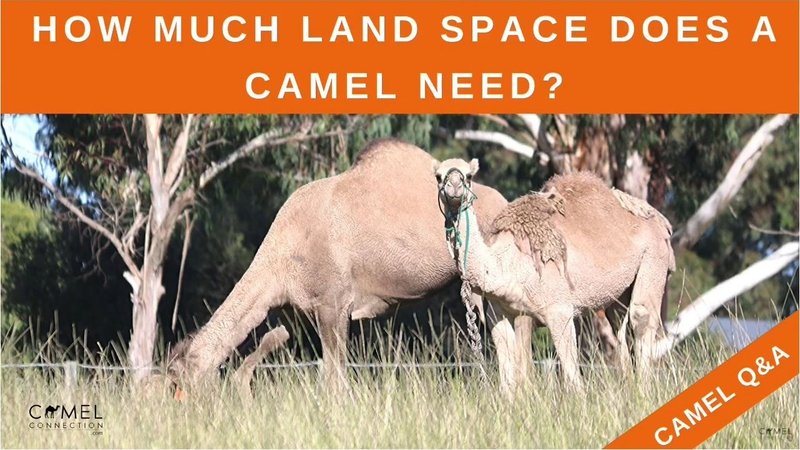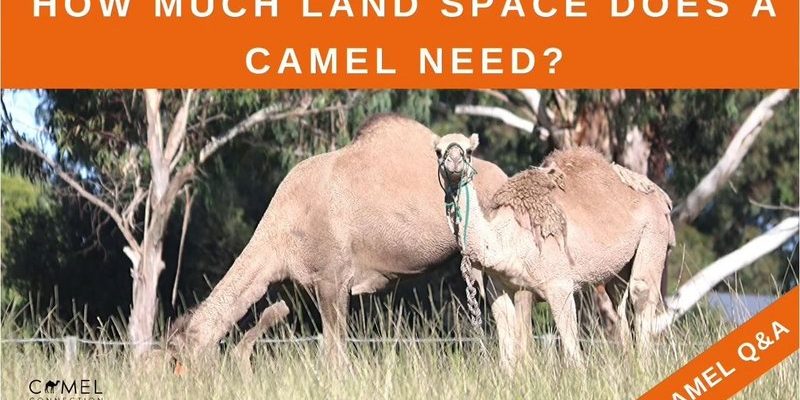
Imagine a camel as a furry desert island—self-sufficient, but needing enough space to really spread out. They’re not just any ordinary pets; they’re fascinating creatures with specific needs. So, let’s dive into the world of camel care and find out just how much space these magnificent animals require.
Understanding Camel Requirements
When we talk about space for camels, we really have to consider a few factors. Camels usually need both outdoor and indoor space. Ideally, a single camel should have at least 1 to 2 acres of land to graze and walk around. This space allows them to exercise, explore, and exhibit natural behaviors. Think of it like giving a toddler enough room to run around and play—without that space, both camels and kids can get cranky!
The type of environment you provide matters too. Camels are built for dry conditions, so they thrive on open land where they can get plenty of sun and fresh air. A well-fenced area is vital as well, since they can be curious and might wander off if left unchecked.
Different Camel Breeds
Different breeds of camels might have varying space needs. For instance, the Dromedary camel, which has a single hump, is typically a little smaller than the Bactrian camel, known for its two humps. This size difference means that a Bactrian camel might need more space to move around comfortably.
Additionally, consider how many camels you plan to keep. Having a companion for your camel can make all the difference, as these social animals thrive in pairs or groups. If you’re thinking about getting more than one, you’ll need to adjust your space requirements accordingly.
Fencing and Shelter Needs
Once you’ve got the land, you need to think about how to keep your camel safe. A solid fence is essential. Camels are surprisingly strong and can easily knock down weak barriers. A fence that stands at least 5 to 6 feet tall is a good start.
As for shelter, camels need a shady place where they can escape the sun and stay dry during rain. A simple barn or a sturdy shed can serve this purpose well. Make sure the shelter has good ventilation since camels can get overheated. It’s all about creating a comfy space for them to relax after a day of exploring.
Camels and Their Habitats
Creating a habitat that mimics their natural environment is key. In the wild, camels roam vast desert landscapes and are used to the heat. If you live in a cooler climate, ensure they have warm bedding and protection from harsh winds. You can also add some natural elements like bushes and rocky areas to keep their environment interesting and engaging.
Feeding Space Requirements
Feeding your camel rightly ties in with the space they need. Camels are grazers, so having open land allows them to munch on grass and shrubs. They’re also known to eat hay and grains, so having an area dedicated to feeding is important.
You’d want to set up a feeding station that is both spacious and clean—no one likes munching in a messy area! Additionally, keep fresh water available at all times. Camels can drink large quantities at once, so having a trough that allows them easy access is important.
Daily Exercise and Interaction
Daily exercise is not just a luxury for camels; it’s a necessity! Ideally, they should have at least 1 to 2 hours of exercise daily. This doesn’t just help keep them healthy; it also prevents boredom, which can lead to unwanted behaviors.
Taking your camel for walks or allowing them to roam within a secure area is a great way to ensure they get the movement they need. Plus, spending time together can strengthen your bond. Just imagine having a massive furry buddy trotting alongside you!
Common Challenges in Camel Care
Even with ample space and resources, keeping a camel presents challenges. For starters, you might run into health issues if they’re not getting enough exercise or mental stimulation. Boredom can lead to problems like chewing on fences or pacing excessively. This is where having the right setup can save the day.
Another challenge is understanding their social needs. If you plan to keep a lone camel, you might find it becomes lonely or anxious. This is why many camel owners opt to keep them in pairs. Just like you’d want a friend by your side, camels do too!
Need for Veterinary Care
Keeping camels healthy is also tied to the space you provide. Regular vet visits and vaccinations are a must. Make sure your setup is accessible for veterinary care—including enough space for trucks or trailers if necessary.
Sometimes, camels can require specialized care, so having a plan for emergency situations is also key. Be sure to have a reliable vet who knows about camel care handy, as they aren’t as common as dog or cat vets.
In conclusion, keeping a camel requires careful consideration of various factors, especially the amount of space you can provide. 1 to 2 acres is a good starting point for one camel, but more space is always better if you can manage it.
A strong fence, proper shelter, and room for feeding and exercise are essential components of creating a healthy environment for your camel. As a camel owner, you’ll be rewarded with a unique and affectionate companionship like no other. By understanding their needs and giving them the space to thrive, you’ll help ensure your camel lives a happy, healthy life. So get ready to embrace the adventure of camel care—it’s a wild ride, but definitely worth it!

